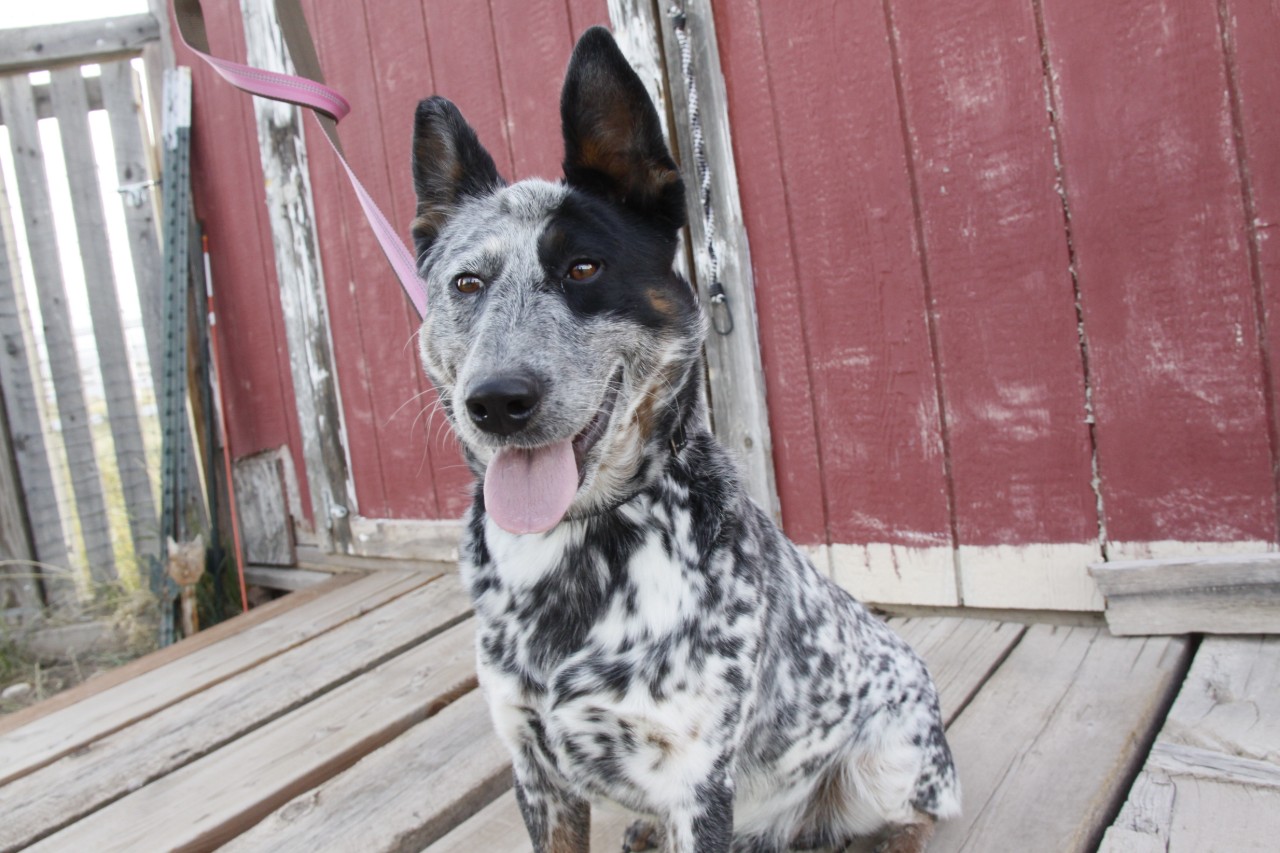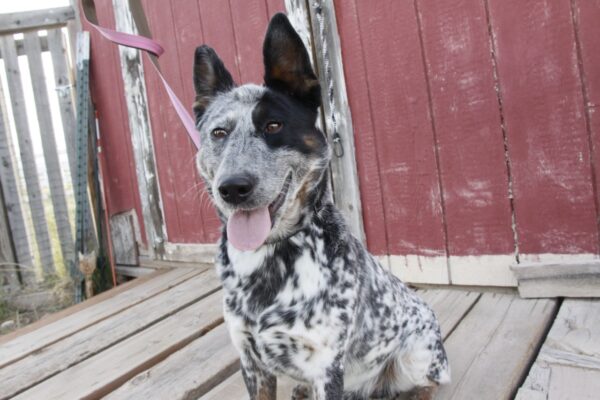
08 Dec Second Chance: Hand Signals!
Second Chance Humane Society’s Animal Resource Center and Thrift Shops have been serving San Miguel, Ouray & Montrose Counties for over 26 years. Call 626-2273 to report a lost pet, learn about adopting a homeless pet, or about Emergency Response, Community Medical, Spay/Neuter, Volunteer, or other services. View shelter pets and services online: www.adoptmountainpets.org.

Hi my name is Badger. I am one of those resilient dogs you hear about who has gone through lots of hardship but hasn’t let it get me down. Yes, I have survived a skull fracture and fending for myself being deaf and sight impaired, not to mention that I was scheduled to be euthanized at a facility where that happens to less adoptable dogs. Lesser beings would fold to the pressure, but it has just made me stronger and more determined to play and to love.
I am fortunate that Second Chance jumped in just in time to save me and let me teach others to embrace and enjoy life. I arrived here a few months ago. Yes, I am deaf, but that staff and volunteers here are working to make sure I can live a pretty normal dog’s life. Dogs are way better communicators than people realize and I am learning sign language and teaching people how to connect with me.
Learning sign language is actually easier than learning verbal cues because dogs are primarily body language communicators and we have a large body vocabulary. The twitch of an ear, the shift of an eye, a slight turn of the head, these are just a few canine expressions that are rich with meaning to us.
In fact, I recommend you teach your hearing-abled dog both verbal and hand signals as there are many situations where visual cues are very handy (pun intended). Additionally, dogs do age and often times lose their hearing, so having those visual cues down is important for any dog. Many people also love the way their relationship is enhanced when they can communicate silently with their dog.
So how do you do it? As with all positive training techniques, consistency and positive reinforcement are key. Make sure you have delicious treats handy and that you’ve chosen how you’ll “mark” the behavior you want to teach. Marking the behavior for a dog with full hearing is usually a “Yes!” or “Good Dog!” when the desired behavior occurs. With a hearing impaired dog markers usually require a thumbs-up, a light, or tactile marker such as touch or leash movement.
Remember to mark the desired behavior when it occurs and then immediately reward your dog with a treat. Make sure your dog will do the behavior reliably (and that, in turn, you will reliably provide the reward). Then start adding in the cue (hand sign) just before asking for the behavior.
Practice to make it perfect. Just like words, visual signals mean absolutely nothing to your dog until you associate them with a behavior. Whatever signals you use, be sure to be patient and positive, and take the time your dog needs to help him understand what they mean. Punishing him for not responding will only confuse and frighten him.
More About Me:
I am only 3-years-young and a smart, handsome male Blue Heeler. On the very top of my Santa Paws wish list is a forever home with a special family (as I take a little more love and patience than other dogs with full sight and hearing). Also on my list is a fenced yard so I can stay safe in my new home. I asked to be the only dog in my new home, as I want all the attention, and that I get lots of time playing ball and cuddling with my new family.


Sorry, the comment form is closed at this time.